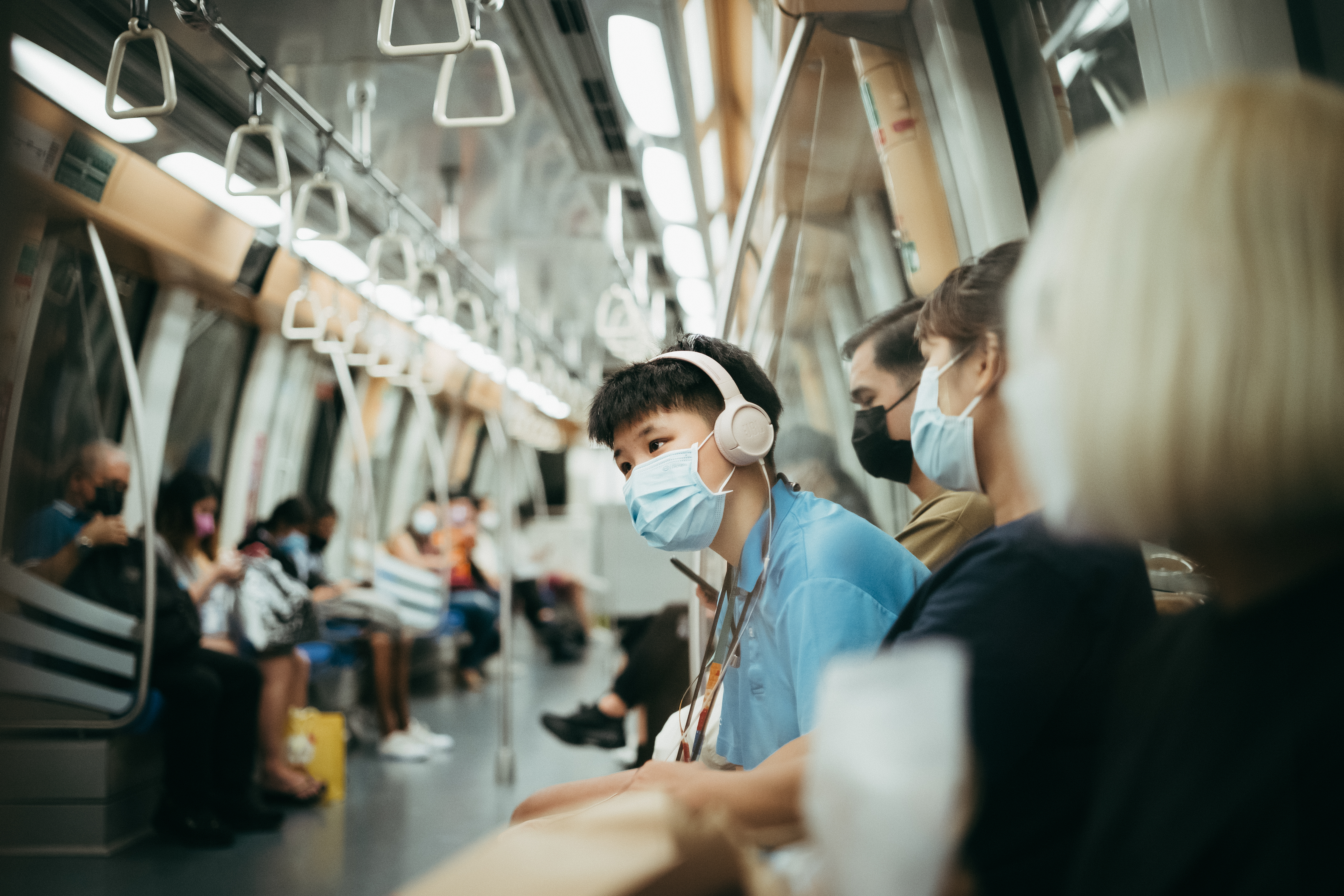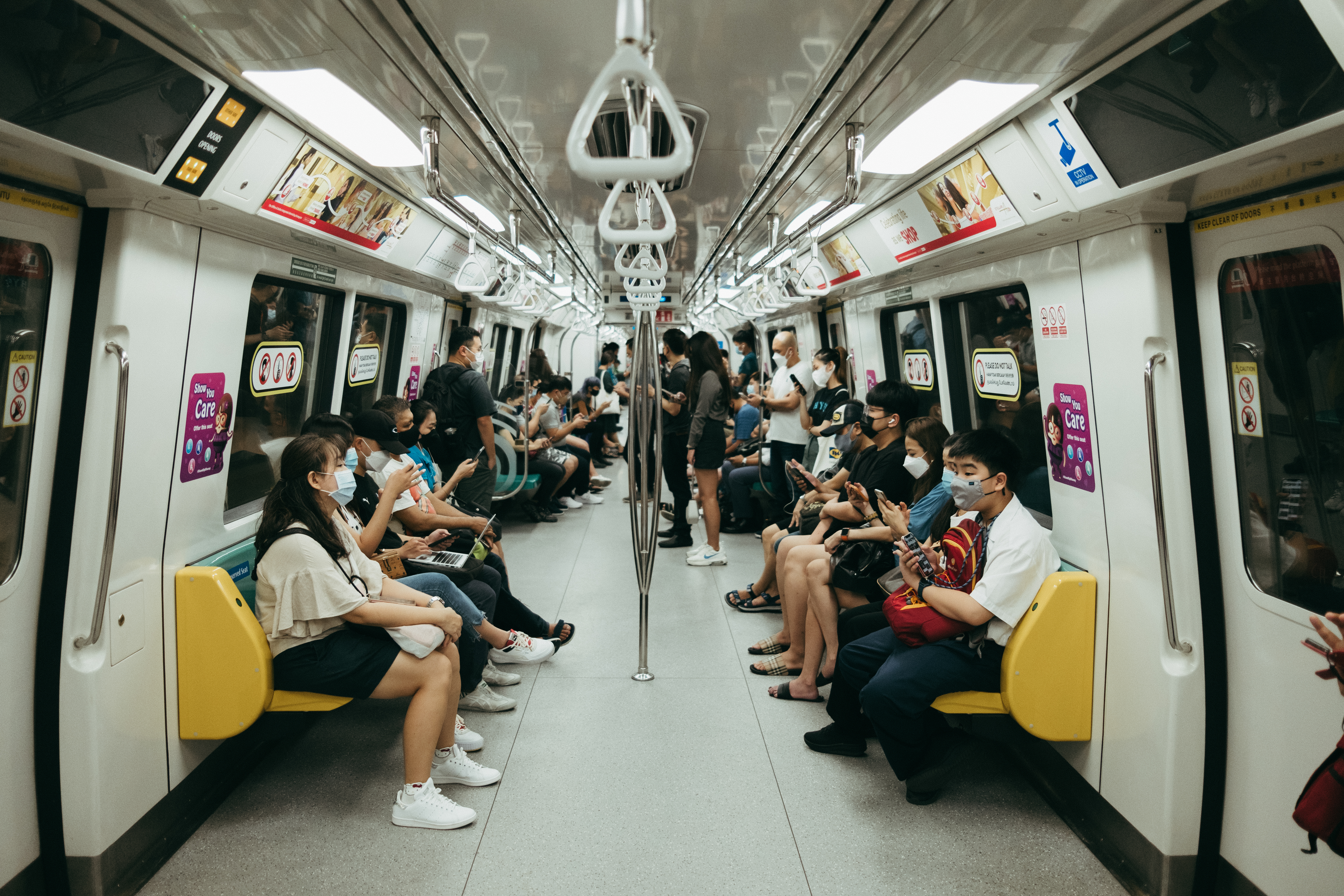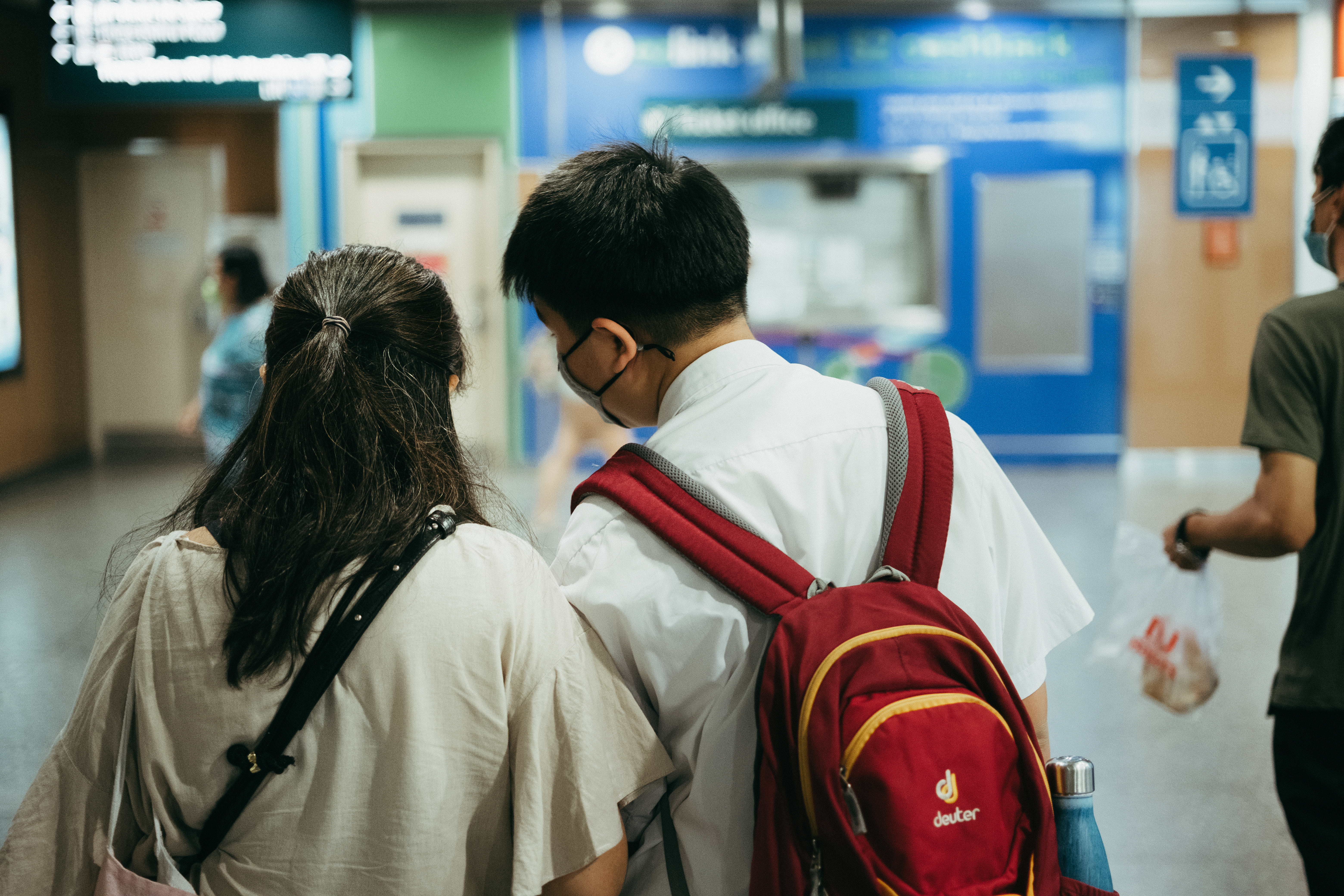Follow us on Telegram for the latest updates: https://t.me/mothershipsg
PERSPECTIVE: "Sitting among the crowd, I feel anxious. I need to make some sounds and rock my body to regulate. However, this sometimes attracts hostile stares from strangers, and even scolding from them. I know they don't like me. But what should I do? I just want to go home.”
This is the viewpoint of 20-year-old Cheryl, a person with autism, whenever she takes public transport on her own.
Public transport is equally stressful and nerve-wracking for Esther, 46, the mum and caregiver of Sean, also a person with autism.
Doubts easily enter Esther's restless mind: "I do not know what may happen next. What could trigger my child? What may trigger the public? [...] How might Sean be able to ask for help at the MRT stations or bus interchanges when he gets lost and forgets how to go to his destination?"
While taking the bus or MRT is second nature to many of us, these are but some of the many challenges caregivers and persons with autism face on the daily when accessing public transportation in Singapore.
In the following photo essay contributed by Calvin Eng from The Birthday Fellowship, we dive into the inner world of Sean, 14, and his mother Esther, 46, as well as Cheryl, 20, and her caregiver, May, 27, on a typical day out on Singapore's public transport system.
Eng, a board-certified music therapist who works with persons on the autism spectrum, believes that every individual, regardless of disabilities, may be facing personal challenges we may not understand.
"Some may self-talk or produce vocalisations that make others feel uncomfortable and invite staring, or may be hyper sensitive to light, noise, and crowds, which may lead to a meltdown. Sometimes, all that is needed for us as citizens is to be more aware, and render help when needed."
Eng hopes that the perspective of these families — reflected in his photo essay — will offer more insight into their lives, and create understanding from the public on the role we all play in making public transport an inclusive space for all.
Eng credits the 23 caregivers and persons with disabilities interviewed for the essay, including Cheryl, Sean, Esther, and May, for being open to sharing their joys and challenges while accessing Singapore's public transportation.
As told to Calvin Eng, and photographed by Larry Toh
Riding on the escalator, the journey begins...
 Cheryl and May riding on the escalator. Photo by @larry.toh.photography
Cheryl and May riding on the escalator. Photo by @larry.toh.photography
Cheryl:
"Travelling down the escalator is like entering an unknown dungeon to me. Mummy says I must learn to suppress my fear, my discomfort to face new train rides, meeting new people, and encountering new situations that may happen.
Being autistic, I don't like changes. I need predictability. Taking train rides for nearly two hours daily to travel between my Day Activity Centre (DAC) and home is a new challenge for me."
In the train, within the MRT station
 Cheryl and May sitting down in the train. Photo by @larry.toh.photography
Cheryl and May sitting down in the train. Photo by @larry.toh.photography
Cheryl:
“Sitting among the crowd, I feel anxious. I will experience sensory overload. Mummy gives me a phone to watch videos while travelling, but I still feel anxious. I need to make some sounds and rock my body to regulate.
However, this sometimes attracts hostile stares from strangers, and even scolding from them. I know they don't like me. But what should I do? I just want to go home."
 Esther and Sean travelling on the MRT. Photo by @larry.toh.photography
Esther and Sean travelling on the MRT. Photo by @larry.toh.photography
Esther:
“Singapore’s transport system is very well established. The MRT system may be easier for an individual with autism as there are announcements made at every approaching station stop, I have taught Sean to listen to these announcements.
My wish is that all our bus systems can announce the approaching stops as well. Currently, I will teach Sean to look out for various landmarks before pressing the bell to alight.”
 Esther and Sean travelling on the MRT. Photo by @larry.toh.photography
Esther and Sean travelling on the MRT. Photo by @larry.toh.photography
Esther:
“Travelling in a very packed public transport requires a lot of courage from a caregiver. I do not know what may happen next.
What could trigger my child? What may trigger the public? I have to be constantly alert, and plan ahead on the actions needed when something happens…Do I continue with the journey? Do I alight at the next stop to calm my child?”
 Cheryl and May in the train. Photo by @larry.toh.photography
Cheryl and May in the train. Photo by @larry.toh.photography
Cheryl:
"I need a break! I need to leave the train! I feel overwhelmed! I am trying my best. I close my eyes and I try to cut off all factors that are making me anxious.
But Mummy says I need to go home. May continues encouraging me to bear with the ride. How much longer will this journey take?"

Esther and Sean at the MRT station. Photo by @larry.toh.photography
Esther:
“How might Sean be able to ask for help at the MRT stations or bus interchanges when he gets lost and forgets how to go to his destination?
How might we best equip our communities to support individuals with special needs in times of need?”
Learning to manage the inner feelings of anxiety
 Cheryl marking the train stations off as she passes each station. Photo by @larry.toh.photography
Cheryl marking the train stations off as she passes each station. Photo by @larry.toh.photography
Cheryl:
“I mark upon reaching every station of my journey, this strategy visually informs me how many stops I have left, till I reach home.
Sometimes I can get a seat and regulate myself, but many times – I don't.
Now, with the "May I have a seat please" lanyard, some kind passengers will give up their seat for me. Thank you! I need a safe space to travel and count my stations ahead.”
 Cheryl and May at a MRT station. Photo by @larry.toh.photography
Cheryl and May at a MRT station. Photo by @larry.toh.photography
Cheryl:
“Like all travellers, I want to complete my ride home safely to have dinner with my family. I have completed my training today at the DAC, I hope Mummy and Daddy will be proud of me as I tried my best!
On days when I melt down, I am unable to complete my trip on public transportation, resulting in the need to take private hire cars. Sometimes, I witness my Mummy cry, as this incurs more transportation fee.
I know they are trying their best to support me, and I really hope this will be a smooth journey home.”
How people with autism can travel on public transport independently
 Esther and Sean travelling on a public bus. Photo by @larry.toh.photography
Esther and Sean travelling on a public bus. Photo by @larry.toh.photography
Esther:
“I am glad that I have trained Sean on the Dos and Don’ts of taking public transportation. Though the start was tough, with consistency, we achieved bit by bit.”
 Esther and Sean walking through a bus interchange. Photo by @larry.toh.photography
Esther and Sean walking through a bus interchange. Photo by @larry.toh.photography
Esther:
“With a child with autism, lifelong learning and guidance is required for us and our child.
We must do whatever we can to assist him in achieving independence.
One aspect is for him to travel independently to school or to the workplace in the future.”
Tips to support fellow commuters and caregivers on public transportation
In the course of Eng's interviews for this photo essay, caregivers and persons with disabilities shared about their experiences with other commuters, where the commuters' first response was to whip out their phones and start taking photos, or to verbally express "unhelpful comments" to them.
Eng wonders: "By doing so, have we spared a thought for that individual and his/her family members?"
Here are some tips on how we can support a fellow commuter who has autism, or their caregiver, should we meet them on public transportation:
 By Calvin Eng. Via Caring SG Commuters on Facebook
By Calvin Eng. Via Caring SG Commuters on Facebook
 By Calvin Eng. Via Caring SG Commuters on Facebook
By Calvin Eng. Via Caring SG Commuters on Facebook
 By Calvin Eng. Via Caring SG Commuters on Facebook
By Calvin Eng. Via Caring SG Commuters on Facebook
You can also take note if the person is wearing a "May I Have A Seat Please" card and lanyard, which lets you know someone might need a seat on their commute, due to an invisible medical condition or disability.
Top images by Larry Toh (@larry.toh.photography on Instagram)
If you like what you read, follow us on Facebook, Instagram, Twitter and Telegram to get the latest updates.
